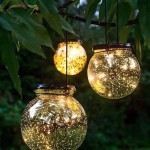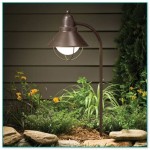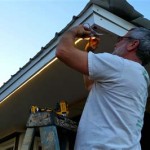Design Low Voltage Outdoor Lighting System
Low voltage outdoor lighting systems offer numerous benefits, including energy efficiency, safety, and flexibility. Designing an effective system requires careful consideration of various factors. Here are some essential aspects to guide your design process:
Power Source: Choose a power source that suits your system's needs. Transformers reduce the line voltage to a safe 12V or 24V, providing power to the lighting fixtures. Opt for weatherproof transformers and ensure their capacity meets the total wattage of the connected fixtures.
Wiring: Use low voltage cables specifically designed for outdoor use. They should be direct burial or conduit-rated and resistant to moisture and UV rays. Proper wire sizing is crucial to minimize voltage drop and ensure efficient lighting. Secure connections using waterproof connectors and seal them with electrical tape to prevent corrosion.
Lighting Fixtures: Select fixtures that meet the desired lighting effects, durability, and aesthetics. Consider the beam spread, light color temperature, and lens types. Choose fixtures that are weather-resistant, corrosion-proof, and impact-resistant to withstand outdoor conditions.
Layout: Plan the fixture placement and spacing to create the desired illumination levels. Use a combination of path lights, spotlights, uplights, and lanterns to achieve layered lighting. Consider the landscape features and architectural elements that need to be highlighted. Proper spacing ensures uniform light distribution and avoids dark spots.
Control System: Utilize a control system to automate the lighting system. Timers can be programmed to turn lights on and off at specific times. Photocells detect daylight and automatically adjust the lighting levels. Motion sensors add an element of safety and security by activating lights when movement is detected. Consider remote controls for convenient operation.
Maintenance: Regular maintenance is essential for the system's longevity. Inspect wires and connections for any damage or corrosion. Clean fixtures regularly to remove dirt and debris. Replace any faulty bulbs or fixtures promptly. Proper maintenance ensures optimal performance and safety.
By considering these essential aspects, you can design a low voltage outdoor lighting system that enhances the beauty, safety, and functionality of your outdoor space. Remember to adhere to local building codes and consult with a qualified electrician for professional advice.

Outdoor Landscape Lighting Design Tips Ideas Environmental Designs

Outdoor Landscape Lighting Design Tips Ideas Environmental Designs

Planning Your Low Voltage Outdoor Landscape Lighting 1000bulbs Blog

How To Design Your 12 Volt Outdoor Lighting System Low Voltage Garden Plan Landscape

Low Voltage Landscape Lighting O Grady S Sterling Va

Designing A Landscape Lighting System Ideas Advice Lamps Plus

Landscape Lighting Design Overview

Outdoor Low Voltage Lighting Diy Family Handyman

How To Choose A Landscape Lighting Design That Fits Your Home

Install Landscape Lighting For Added Curb Appeal







